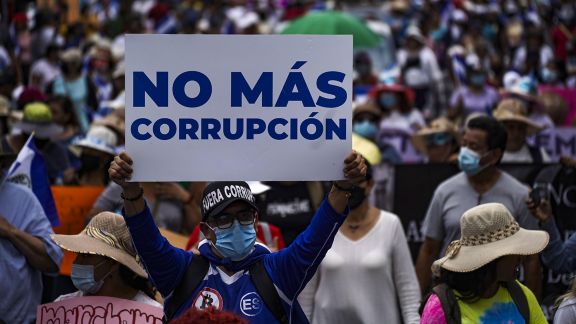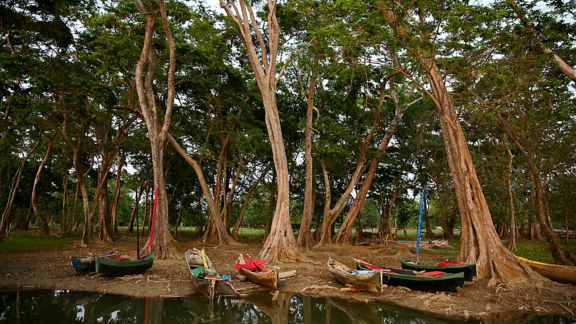Strengthening USAID’s Biodiversity Programming Through Co-Designed Impact Evaluations

Authors
Protik Ali & Lauren Persha
Principal Research Scientists, International Programs
December 2024
NORC launches its first Impact Evaluation Clinic for biodiversity, convening USAID mission staff and conservation experts to design evidence-based approaches to program evaluation.
There is strong scientific consensus that the global decline in biodiversity—marked by widespread species loss and degradation of ecosystems—poses a serious threat to human well-being in addition to natural systems, affecting human health, food security, and economic stability among others. In response, the international community has committed to preserving at least 30 percent of the world’s land, freshwater, and oceans, among other ambitious targets, through agreements such as the landmark 2022 Kunming-Montreal Global Biodiversity Framework.
For nearly four decades, the United States Agency for International Development (USAID) has played a key role in international conservation, supporting programs that address biodiversity loss while strengthening local communities that are reliant on natural systems and the services they provide. Despite notable progress, global biodiversity continues to decline, underscoring the urgent need for conservation strategies that are both effective and grounded in scientific evidence.
Rigorously evaluating biodiversity conservation efforts has been a challenge.
USAID has long embraced evidence-based conservation, but applying rigorous evaluation methods such as randomized controlled trials to understand the effectiveness of biodiversity programs remains uncommon in the sector. Several reasons contribute.
Conservation programming theories of changes are often complex and involve multiple outcomes, scales, and timeframes over which change is anticipated. Measuring biodiversity outcomes such as species recovery, ecosystem health, and habitat restoration is complex and can take years to materialize. Establishing a clear counterfactual—determining what would have happened without an intervention—is far more challenging in conservation than in other sectors like health or education.
The scale at which conservation programs operate can also present some particular challenges for randomization and power, while the potential for spatial spillovers is high and can further complicate evaluation design options.
In our decades of experience evaluating USAID-funded projects, we’ve also found that designing rigorous evaluations and generating high-quality evidence requires extensive collaboration among key stakeholders—funding agencies, implementing partners, local governments, and communities. Evaluation efforts are more effective when these actors are involved from the outset.
NORC conducted an impact evaluation clinic to help USAID bridge the evidence gap.
To help contribute to filling the evidence gap, we recently launched the first Impact Evaluation Clinic for biodiversity in collaboration with USAID’s Bureau of Planning, Learning, and Resource Management and the Biodiversity Division.
We helped design and facilitate this week-long workshop, bringing together USAID country missions, biodiversity specialists, and evaluation experts to co-develop rigorous impact evaluations focused on key learning interests and testable components of conservation programs, while facilitating knowledge exchange and strengthening participants’ impact evaluation skills.
What exactly is an Impact Evaluation Clinic? It’s a structured, collaborative learning event. USAID country mission teams present aspects of their biodiversity conservation challenges, learning interests, and programming approaches and work alongside a range of experts—including evaluation specialists, ecologists, environmental economists, and marine biologists—who present existing academic evidence and help identify knowledge gaps and learning opportunities via rigorous impact evaluation approaches.
The clinic also features technical sessions on impact evaluation design, randomization techniques, sample size determination, and statistical power calculations. After these sessions, participants break into small groups to design an impact evaluation approach around a key conservation learning interest and testable program component, tailored to each country mission’s needs and challenges.
Each day of the workshop involves deeper dives into practical evaluation challenges. For example, a technical session focused on randomization techniques enables the group to tackle the logistics of how those techniques can be implemented in real-world conservation programming contexts. At the end of the week, staff from each country mission present a concrete plan for evaluating their biodiversity initiatives with the aim of generating rigorous evidence to help strengthen future programming.
Impact Evaluation Clinics matter for biodiversity.
The convening of a biodiversity-focused Impact Evaluation Clinic is especially exciting as it represents a significant opportunity to expand the application of rigorous evaluation methods to future conservation efforts. By focusing on causal evidence, the clinic allows USAID, its partners, and the research community to better understand the effectiveness of various biodiversity conservation efforts, thereby improving the knowledge base on what works and future program design.
Moreover, the clinic’s collaborative nature—where academic subject and evaluation experts work closely with USAID country mission staff—fosters strong partnerships from the start of the evaluation planning and a deeper understanding of both the technical aspects of impact evaluation and the challenges of implementing and rigorously learning from conservation programs in diverse global contexts.
The beauty of the clinic lies in its ability to foster collaborative brainstorming and knowledge exchange and contextualize evaluation methods to the local, environmental, and political realities of each country mission. This ensures that harmonized recommendations around evaluation designs and for future programs are not just theoretical but actionable.
This clinic model offers a valuable framework that can be used across sectors.
Impact Evaluation Clinics mark a critical step toward designing evidence-based conservation strategies tailored to specific contexts. Translating these designs into successful evaluations will be an important and exciting next step to building the evidence base, generating actionable insights, and strengthening conservation impacts over the longer term.
A key benefit of this clinic model is its adaptability to a range of sectors. The clinic’s collaborative and evidence-focused approach provides a valuable framework for integrated evaluation and programming design irrespective of sector. By fostering partnerships and building evaluation capacity, Impact Evaluation Clinics can set in motion new learning, catalyze evidence-based action, and help drive meaningful change across a range of global development initiatives.
Suggested Citation
Ali, P. and Persha, L. (2024, December 19). Strengthening USAID’s Biodiversity Programming Through Co-Designed Impact Evaluations. [Web blog post]. NORC at the University of Chicago. Retrieved from https://www.norc.org.








